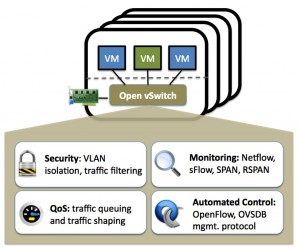
Add Bridge Failed Package Not Installed Centos Linux
In computer networking, a bridge is a network device that interconnects more than one LAN segment at Layer-2. Bridges can filter traffic between different segments, thereby reducing the amount of traffic on LAN, even with many LAN segments. This bridge functionality is built into the Linux kernel, so one can set up a software bridge interconnecting multiple network interfaces.
The Movicon 11.5 platform licensing policy. Movicon 11.5 offers a simple, flexible and modular license management model adaptable to every need according to a cost effective application needs ratio. Progea movicon 11 crack. Movicon™ 11 is a standard software for all those working in industrial automation, remote control, utilities and building automation. A truly universal Scada/HMI platform, independent from hardware, adaptable and deployable absolutely anywhere.
In this post, I will describe how to configure a Linux bridge interface. A Linux bridge can be created with a user-space command-line tool called brctl which allows you to create, remove and administer Linux Ethernet bridges.
To use brctl command, you need to install the following package. On Ubuntu or Debian.
Dec 09, 2012 [root@planitia ~]# brctl addbr br0 add bridge failed: Package not installed That's an issue for me because manual tells that module is required which should be autoloaded and it can be verified by `brctl` without options, and that gives me.
$ sudo brctl delif br0 eth0 It is worthwhile to note that a Linux bridge created by brctl is NOT persistent, meaning that any bridge created by brctl will automatically be destroyed upon boot. If you would like to have a permanent bridge configuration, you need to use a separate configuration file in /etc. Create a Linux Bridge Permanently In the rest of the tutorial, I will describe how to create a permanent Linux bridge interface from the command line using /etc configuration. If you want to use the GUI-based Network Manager to configure a Linux bridge, refer to instead. As an example, I will create a Linux bridge called br0 and add eth0 and eth1 interfaces to the bridge. Configure a permanent bridge interface on Ubuntu or Debian You need to edit /etc/network/interfaces as follows. If the bridge br0 is to be assigned an IP address by DHCP: auto eth0 iface eth0 inet manual auto eth1 iface eth1 inet manual auto br0 iface br0 inet dhcp bridge_ports eth0 eth1 If the bridge br0 is to be assigned a static IP address: auto eth0 iface eth0 inet manual auto eth1 iface eth1 inet manual auto br0 iface br0 inet static bridge_ports eth0 eth1 address netmask gateway If you want to set up a transparent bridge between eth0 and eth1, you don't need to assign any IP address to the bridge.
In that case, the following will do. Auto eth0 iface eth0 inet manual auto eth1 iface eth1 inet manual auto br0 iface br0 inet manual bridge_ports eth0 eth1 Configure a permanent bridge interface on CentOS, RHEL or Fedora You need to update existing eth0/eth1 configuration in /etc/sysconfig/network-scripts/ifcfg-eth[0-1], and add bridge configuration in /etc/sysconfig/network-scripts/ifcfg-br0.

Hi Dan, I am setting up Xen on Ubuntu. I have setup a static Linux bridge on Xen/Dom0 and now need to create a DomU and have that VM's independent ethernet i/f be able to reach the network via Dom0's bridge. How do I do that configuration? Your example (and others I've found) all talk about adding another interface belonging to the bridge owner, and the blogs I've seen discussing this network bridging all assume dhcp. Unfortunately I have a pool of static addresses I must work with, and I haven't found examples of how to statically connect to a bridge from another machine sharing the same lan.
The brctl command is found is the bridge-utils package What is your goal and network topology? 1# Are you trying to load balance on Layer 2 between two Ethernet interfaces on your Arch Box connected to a Managed Switch that supports Layer 2 bridging?